With its illustrious history and array of natural wonders, Alghero is certainly a place with plenty to explore. Marina Spironetti unlocks the secrets that belong to this sun-kissed Sardinian city.
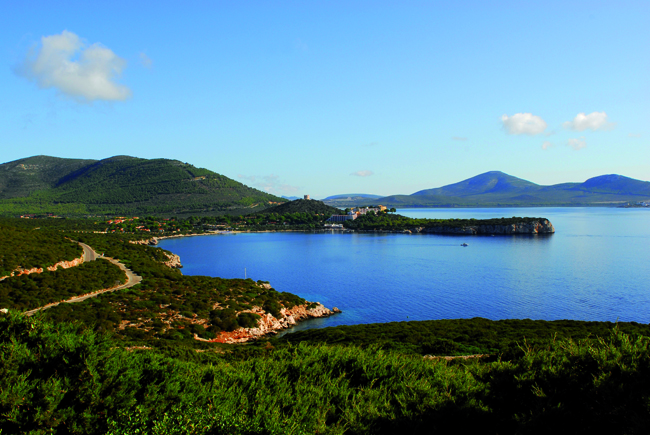
The light. The most special thing about Alghero, in my opinon, is the light. Especially in the evening, when the sea-facing walls seem to catch fire as the sun sinks into the Mediterranean. Or in the chiaroscuro effect of the alleys in the old town. Little had changed since my last visit there – and all the nice things I remembered from my childhood days still remained. Its cobbled streets were the only thing I had forgotten about: protruding, irregular stones that give people a noticeable unsteady gait, like someone walking on eggs.
THE CATALAN CONNECTION
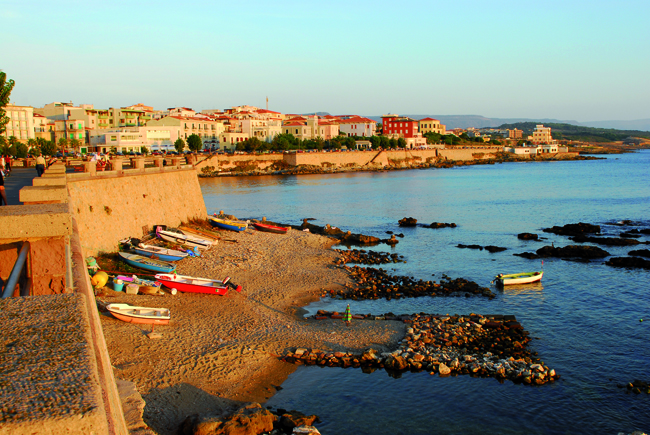
All this – and much more – contributes to the uniqueness of the city, to that distinctiveness that is neither Italian nor quite Sardinian either. If Sardinia is one of Italy’s most peculiar regions, Alghero is definitely the least Sardinian of its cities. An island within an island. Walking through the cobweb of alleyways, you might overhear fragments of conversation in the local Algherese dialect, an archaic version of the Catalan language spoken in the region of Barcelona, as a consequence of over 300 years of Catalan rule.
It all began in the 14th century, when the Aragonese from northeastern Spain, attracted by Alghero’s strategic position, turned up at its gate and claimed it in the name of the pope, quickly throwing out the ruling Doria family from Genoa. The locals did not prove to be especially submissive though. After two rebellions in a matter of months, the king had to sail over in person to sort them out, expelling everyone and replacing the revolutionaries with loyal Catalans. Imposing walls and towers were soon erected, and Alghero – significantly named Barceloneta (little Barcelona) – was turned into a Catalan enclave on the island.
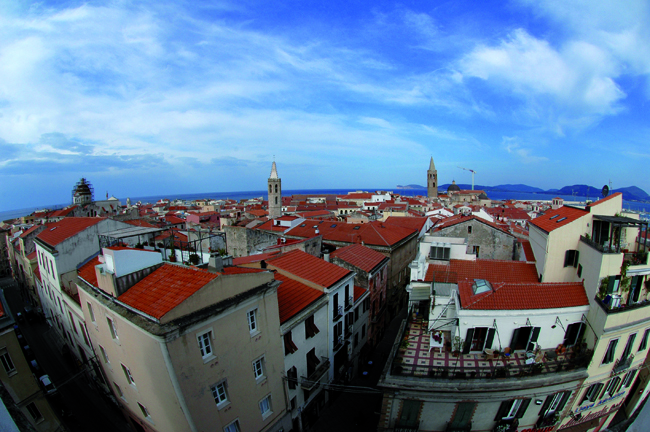
Although natives were later allowed to return to the city and the Aragonese days are long gone, Alghero still maintains a strong Catalan identity to this day. The Algheresi, who still think of themselves primarily as Catalans, have developed a different identity from everybody else in Sardinia. Introverted Sards, constantly ransacked by marauding tribes as they were, have always turned their backs to the sea and looked inward, while the Algheresi, separated from the rest of the island by thick defensive walls, turned to it as a way of life. The blue waters of the Mediterranean have been very generous to them, providing an abundance of coral (ubiquitous in all the jewellery shops in town) and lobster (the local delicacy, featured in every restaurant menu).
A FORTRESS TOWN
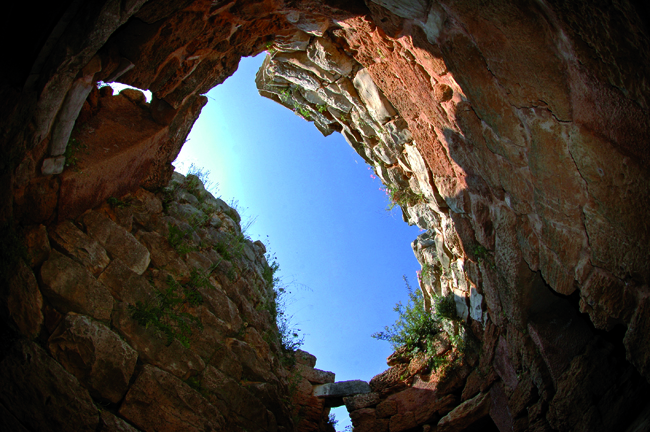
Starting from seven imposing towers still guarding the centro storico, everything is still a reminder of centuries of Catalan rule. The Algheresi, who deeply regret tearing down the majority of the Spanish walls back in the 19th century, are doing their best to preserve what is left with a comprehensive programme of restoration. The impressive Torre Sulis, which dominates the piazza of the same name, is now used for temporary art exhibitions. The Torre di Porta a Terra houses a multimedia museum about the city’s history and its terrace offers a spectacular 360 degree view over the city’s red-tiled skyline and port, with the Capo Caccia promontory in the background. The effects of this restoration process are also visible when walking along the ramparts, now dotted with restaurants and cafés, and especially pleasant in the evening, when young crowds come and go between the atmospheric bars.
Inside the walls, you can lose yourself among narrow alleyways, small piazzas, gothic churches and pastel-coloured houses with wrought iron balconies covered in bright flowers. All the cobbled streets of Barceloneta seem to converge around the traffic-free Piazza Civica, Alghero’s elegant ‘drawing room’, with expensive bars and shops. From the western end of the square, Via Manno leads into Piazza Duomo, a smaller but attractive square dominated by the four columns of the Neoclassical cathedral.
NATURAL WONDERS …
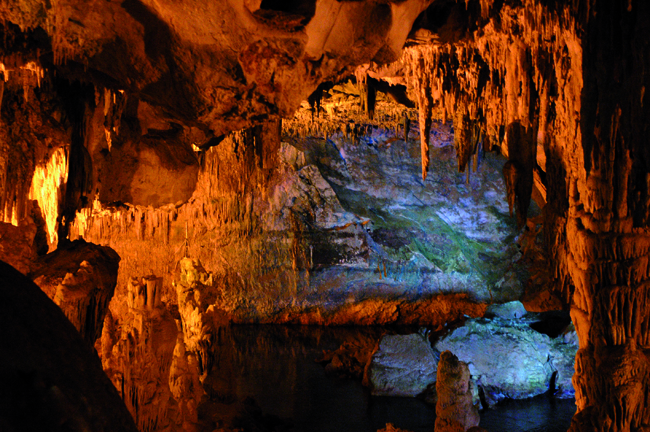
Needless to say, many visitors come to Alghero for the beaches, and they surely don’t leave disappointed. Those of Maria Pia and delle Bombarde are a short drive away and equally delightful. From the beach there are also fantastic walks along the coast. It becomes very dramatic out to Capo Caccia, where high cliff faces surge downwards into the sea. About an hour’s drive up to the northwest coast is Spiaggia della Pelosa, near Stintino, the most beautiful beach in this part of Sardinia, guarded by an ancient stone watchtower. The crystal clear water – where you can see every detail of your toes even when waist deep – is still one of my fondest childhood memories related to this island.
As far as natural wonders are concerned, the short trip to the Grotta di Nettuno, one of Italy’s most breathtaking cave networks, is another must. Neptune’s grotto has always been one of Alghero’s best-known attractions, so famous that, according to some, the name Alghero derives from al-ghar, the Arabic term for cave. You can get there on one of the frequent boats that depart daily from the tourist port, or – an even better option – drive the short distance to the Capo Caccia peninsula. Once you park your car, you descend down the spectacular 654-step Escala del Cabirol.
Significantly, the name means ‘goat’s steps’, a reference to the fact that the notoriously agile animal was the only one that had access to the craggy area before the stairway was built in 1954. The sheer cliff face and dark blue water below are almost as breathtaking as the marine cavity itself. A mythical abode of nymphs and fairies, the huge grotto boasts several caverns, wide galleries and crystal-clear underground pools. Amazing formations have been created by stalagmites and stalactites that have, over millions of years, finally grown to meet each other.
… AND A MYSTERIOUS PAST
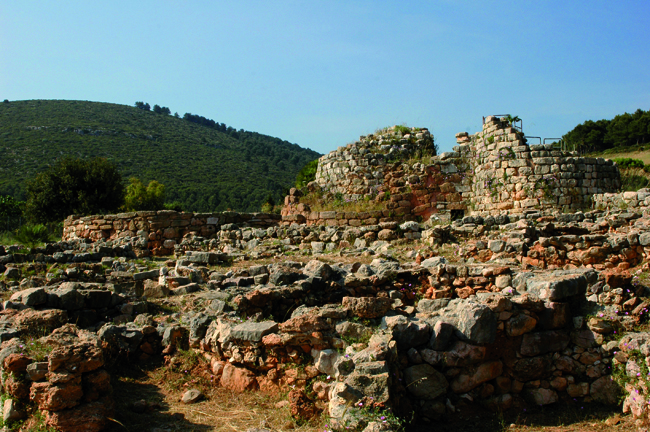
The nearby Nuraghe di Palmavera is also worth a visit. This is only one of over 7,000 mysterious cone-shaped towers scattered across the island, dating back to the 14th century BC. There is still an eeriness about it, which is not very different from the feeling you would experience in Agrigento or Pompeii. And yet it is even stranger, permeated with unanswered questions.
Archaeology lovers might also want to visit the necropolis of Anghelu Ruju, with its ancient burial chambers. The site now stands in the middle of the vineyards of the Sella e Mosca winery, Sardinia’s biggest wine producer. Should you decide to end your stay in Alghero with a few glasses of their velvety red wine, keep in mind that it is one of the strongest in Italy!
